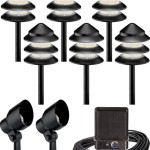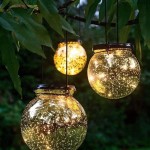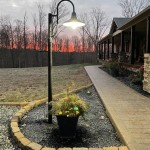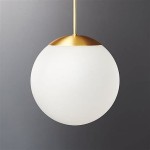Outdoor Waterproof Solar Lights: A Comprehensive Guide
Outdoor waterproof solar lights have become an increasingly popular and practical lighting solution for residential and commercial properties alike. Their appeal lies in their energy efficiency, ease of installation, and resilience to various weather conditions. This article provides a comprehensive overview of outdoor waterproof solar lights, covering their functionality, types, benefits, factors to consider when purchasing, and maintenance.
Solar lights harness the power of the sun through photovoltaic (PV) cells. These cells convert sunlight into direct current (DC) electricity. This electricity is then stored in a rechargeable battery within the light fixture. As darkness falls, a photosensor detects the absence of light and automatically activates the LED (Light Emitting Diode) that provides illumination. The stored energy is then discharged to power the LED until the battery is depleted or sunlight returns to recharge it.
The “waterproof” designation of these lights is crucial for their durability and performance in outdoor environments. This typically means the lights are designed to withstand rain, snow, and other forms of moisture. The level of water resistance is often indicated by an Ingress Protection (IP) rating, which specifies the degree to which the enclosure protects internal components from solids and liquids. For outdoor use, an IP rating of IP65 or higher is generally recommended. An IP65 rating signifies protection against dust and water projected from a nozzle, while higher ratings offer greater protection, such as against submersion.
Key Points to Consider
Before delving deeper into the specifics of outdoor waterproof solar lights, it’s important to understand three key advantages they offer. These advantages contribute significantly to their increasing adoption rate.
Energy Efficiency and Cost Savings
One of the most compelling advantages of solar lights is their energy efficiency. As they are powered by the sun, they eliminate the need for external electrical wiring and reliance on the power grid. This translates into zero electricity costs for lighting, reducing monthly utility bills significantly over time. Furthermore, the use of solar energy contributes to a smaller carbon footprint, aligning with environmentally conscious practices. The initial investment in solar lights is typically offset by the long-term savings on electricity consumption. While traditional outdoor lighting requires ongoing energy expenditure, solar lights provide a sustainable and cost-effective alternative.
The energy efficiency of solar lights is also enhanced by the use of LEDs. LEDs are significantly more energy-efficient than traditional incandescent or halogen bulbs, converting a higher percentage of electricity into light rather than heat. This means that solar lights can provide ample illumination while consuming minimal energy, extending the lifespan of the battery and the overall operational efficiency of the system. The combination of solar power and LED technology makes outdoor waterproof solar lights a highly energy-efficient and environmentally responsible lighting solution.
Ease of Installation and Maintenance
Outdoor waterproof solar lights are remarkably easy to install, requiring no complex wiring or electrical expertise. This eliminates the need to hire an electrician, further reducing installation costs. Most solar lights can be easily mounted on walls, fences, posts, or even inserted directly into the ground using stakes. The absence of wiring also provides greater flexibility in terms of placement, allowing for lighting in areas where traditional electrical outlets are not readily available. This simplifies the process of illuminating gardens, pathways, patios, and other outdoor spaces.
Maintenance requirements for solar lights are also minimal. The primary maintenance task is to periodically clean the solar panel to ensure optimal sunlight absorption. Dust, dirt, and debris can accumulate on the panel surface, reducing its efficiency in converting sunlight into electricity. A simple wipe with a damp cloth will usually suffice to keep the panel clean. The batteries in solar lights may eventually need to be replaced, but this is typically required only after several years of use. Overall, the low maintenance requirements of solar lights make them a convenient and hassle-free lighting solution for outdoor applications.
Durability and Weather Resistance
The “waterproof” aspect of outdoor solar lights is crucial for their long-term performance and reliability. These lights are designed to withstand exposure to various weather conditions, including rain, snow, and extreme temperatures. The durable construction materials and sealed enclosures protect the internal components from moisture and corrosion, ensuring that the lights continue to function properly even in harsh environments. The use of weather-resistant materials, such as stainless steel, aluminum, and durable plastics, further enhances the longevity of the lights.
The IP rating provides a standardized measure of the level of protection against solids and liquids. As mentioned earlier, an IP65 or higher rating is generally recommended for outdoor solar lights. This ensures that the lights are protected against water projected from a nozzle or even more intense water exposure. The waterproof design of these lights allows them to operate reliably year-round, providing consistent illumination regardless of the weather conditions. This durability and weather resistance make them a reliable and long-lasting lighting solution for outdoor spaces.
Types of Outdoor Waterproof Solar Lights
The market offers a diverse range of outdoor waterproof solar lights, each designed for specific purposes and aesthetic preferences. Understanding the different types available is essential for selecting the most suitable options for individual needs.
Solar Path Lights: These lights are designed to illuminate pathways, driveways, and garden borders. They typically feature a low profile and emit a soft, diffused light. They are often installed using stakes that are inserted into the ground.
Solar Spotlights: Spotlights provide focused illumination for highlighting specific features, such as trees, shrubs, or architectural details. They usually have adjustable heads that allow for directing the light beam as needed.
Solar Flood Lights: Floodlights offer broad illumination for large areas, such as patios, decks, or parking lots. They typically feature a wide light beam and high light output.
Solar String Lights: String lights are decorative lights that can be used to create a festive atmosphere in outdoor spaces. They are often strung along fences, trees, or pergolas.
Solar Wall Lights: Wall lights are mounted on walls to provide ambient or security lighting. They come in various styles and designs to complement different architectural styles.
Solar Post Lights: Post lights are designed to be mounted on posts, such as those used for fences or mailboxes. They provide both illumination and decorative accents.
Solar Deck Lights: Deck lights are specifically designed for use on decks and patios. They are typically low-profile and weather-resistant.
Solar Security Lights: These lights are equipped with motion sensors that activate the light when movement is detected. They provide added security and deter potential intruders.
Factors to Consider When Purchasing
Several factors should be taken into consideration when selecting outdoor waterproof solar lights to ensure optimal performance and satisfaction.
Brightness (Lumens): The brightness of a solar light is measured in lumens. The higher the lumen rating, the brighter the light. The required brightness will depend on the specific application. For example, path lights may only require a few lumens, while floodlights may require several hundred.
Battery Capacity: The battery capacity determines how long the light will operate on a single charge. A higher battery capacity will allow the light to operate for longer periods, especially on cloudy days. The battery type, typically Ni-MH or Lithium-ion, also influences performance and lifespan.
IP Rating: As previously mentioned, the IP rating indicates the level of protection against solids and liquids. For outdoor use, an IP rating of IP65 or higher is recommended.
Material: The material of the light fixture should be durable and weather-resistant. Common materials include stainless steel, aluminum, and durable plastics.
Design and Style: The design and style of the light should complement the surrounding environment. Consider the architectural style of the property and the overall aesthetic you are trying to achieve.
Light Color Temperature: The color temperature of the light is measured in Kelvin (K). Lower Kelvin values (e.g., 2700K) produce a warm, yellowish light, while higher Kelvin values (e.g., 6000K) produce a cool, bluish-white light. The preferred color temperature will depend on personal preferences and the intended use of the light.
Sensor Technology: If choosing security lights, consider the type and sensitivity of the motion sensor. Some sensors are more sensitive than others and may be triggered by small animals or swaying branches.
Warranty: A warranty provides protection against defects in materials and workmanship. A longer warranty period indicates greater confidence in the product's quality and durability.
Brand Reputation: Research the reputation of the brand and read reviews from other customers. This can provide valuable insights into the product's quality and reliability.
Maintenance Tips for Outdoor Waterproof Solar Lights
Proper maintenance is essential for ensuring the longevity and optimal performance of outdoor waterproof solar lights.
Regular Cleaning: Clean the solar panel regularly to remove dust, dirt, and debris. A simple wipe with a damp cloth will usually suffice.
Battery Replacement: The batteries in solar lights will eventually need to be replaced. Follow the manufacturer's instructions for battery replacement.
Proper Placement: Ensure that the solar panel is placed in a location where it receives ample sunlight. Avoid placing the light in shaded areas.
Winter Storage: In areas with harsh winters, it may be necessary to store the solar lights indoors to protect them from extreme temperatures and snow accumulation.
Check for Damage: Periodically inspect the lights for any signs of damage, such as cracks or leaks. Repair or replace damaged components as needed.
Keep Away From Sprinklers: While the lights are waterproof, prolonged exposure to direct sprinkler spray may eventually cause damage. Position the lights to minimize exposure to sprinklers.
By following these maintenance tips, owners can extend the lifespan and maintain the performance of their outdoor waterproof solar lights, maximizing their value and enjoying their benefits for years to come.

Panda Solar Light Outdoor Waterproof Heavy Duty 80w 120w 150w 250w 350w 450w Lights Buy 1 Take With Remote Led Promo

16 Pack Solar Path Lights Outdoor Waterproof B0814hkg81 The Home Depot

Solar Lights Outdoor Waterproof Multi Sets

300w High Bright Outdoor All In One Led Solar Street Light For Anern

90 150 200 Led Solar Fireworks Lights Outdoor Waterproof Garden Light With 8 Lighting Modes Diy Lawn Lamp For Yard Pathway Decor Temu

Solar Street Light Outdoor Waterproof Integrated All In One With Remote Control Security Wireless Flood Light1000w 800w 500w 300w Lazada Ph

Solar Street Lights Outdoor Waterproof Led Light 3 Modes With Remote Wall Lamp Powered Lazada Ph

Radha Outdoor Waterproof Solar Garden Decorative Lights For Yard Patio Light Set In Buy

Super Bright Solar Lights Outdoor Waterproof 10 Pack Dusk To Dawn Up 12 Hrs Powered Pathway Garden Auto On Off Led Landscape Lighting Decorative For Walkway Patio Yard

2pcs Solar Light Outdoor Waterproof Led Swing Lawn Lamp Garden Firefly Floor Firework For Deco Com
Related Posts







